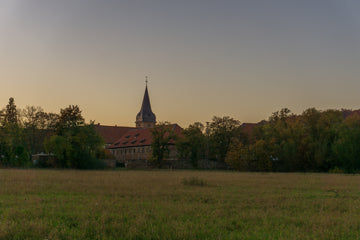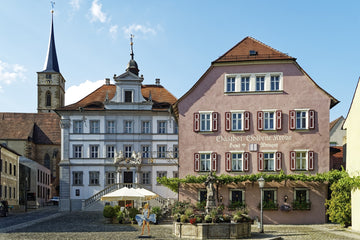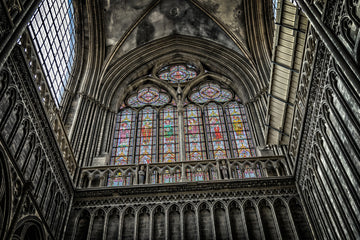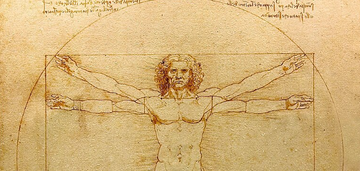History of Aesthetics
The History of Aesthetics: From Antiquity to Modernity
The history of aesthetics is a fascinating field that examines human conceptions of beauty, art, and harmony over thousands of years. Aesthetics is the study of beauty and taste, and examines what makes works of art and objects appear "beautiful" and "aesthetically pleasing." From the ancient Greek philosophers to modern art theory, the aesthetic view and definition of beauty has continually evolved and been redefined.
The Roots of Aesthetics: Ancient Philosophies
In ancient times, philosophers such as Plato and Aristotle were deeply concerned with the question of beauty and art. Plato viewed beauty as an idea, an eternal and perfect form that only exists in fragments in the visible world. For him, beauty was closely linked to truth and could be represented by mathematical harmonies and proportions. His ideas about ideal forms and the imitation of nature influenced all ancient art and architecture.
Aristotle, on the other hand, took a more pragmatic view and placed emphasis on the realistic representation and usefulness of art. For him, art was an imitation (mimesis) of reality that arouses feelings such as compassion and fear and thus has a purifying effect, the so-called catharsis, on the viewer. Aristotle's views had a lasting impact on the development of Western aesthetics and laid the foundation for the later distinction between different art forms and their meaning.
Medieval Aesthetics: Divine Beauty and Symbols
In the Middle Ages, the understanding of aesthetics changed fundamentally, as art and beauty were strongly influenced by religious ideas. In Christian Europe, beauty was considered a sign of the divine and was often seen as a manifestation of the glory of God. Symbols and religious motifs dominated the art of this period, and aesthetic principles were often based on theological and moral ideas. Gothic architecture is a good example of medieval aesthetics - with tall, light-filled churches and detailed decorations that were intended to express grandeur and the pursuit of God.
In the Islamic cultural area, however, aesthetics were strongly influenced by calligraphy and geometric patterns, as the depiction of living beings was considered problematic. The arabesque patterns and complex geometries of this era symbolize the infinity and perfection of God and represent a spiritual, abstract conception of beauty.
Renaissance and Baroque: The Rediscovery of Human Beauty
During the Renaissance (14th to 17th centuries), aesthetics experienced a real rebirth in Europe. Artists and philosophers reflected on the ancient heritage and the ideals of Greek and Roman art. Beauty was again understood as a perfect harmony of proportions, but now the human being and his individuality also took center stage. Artists such as Leonardo da Vinci and Michelangelo strove to depict the human body in a way that was both anatomically correct and aesthetically pleasing.
In the Baroque era (17th century), aesthetics became more dramatic and emotional. Artists such as Caravaggio and Bernini used light and shadow to create movement and drama in their works. Baroque aesthetics were characterized by their magnificent, dynamic and often over-the-top forms that were intended to beguile the senses and touch the viewer emotionally. This marked a departure from the strict, idealized aesthetics of the Renaissance towards a stylish play with movement and depth.
Enlightenment and Classicism: The Search for Universal Principles of Beauty
With the Enlightenment (18th century) there was a growing interest in rationality and universal principles, which were also applied to aesthetics. Philosophers such as Immanuel Kant and Edmund Burke addressed the question of what constitutes beauty and the sublime. Kant developed a theory of "disinterested pleasure" - the beautiful is seen as something that is appreciated without practical interest, purely for its own sake.
Classicism drew on the clean, harmonious forms of antiquity and strove for a "pure" beauty that corresponded to the universal principles of harmony and order. Artists such as Jacques-Louis David were guided by these principles and created works that embodied a calm, solemn and "classical" aesthetic. During this period, beauty was understood as something universal and objective that followed certain rules and proportions.
Romanticism: The Sublime and the Mysterious
With the Romantic period (late 18th and early 19th centuries) there was a shift towards subjectivity and an emphasis on the emotional and individual aspects of beauty. Romantics such as Caspar David Friedrich emphasized the sublime - the feeling of wonder and awe that nature or great works of art can evoke. Beauty was now defined less by clear rules and more by the feeling and mood it evoked.
Literature and painting of this period often feature scenes depicting the beauty of the mysterious and the overwhelming. Romantic aesthetics valued the natural and the untamed and often portrayed humans as a small part of a vast, unfathomable nature. This approach had a strong influence on the modern conception of art and aesthetics, leading to a greater openness to emotional and subjective representations.
Modernism and Postmodernism: Aesthetics in the Age of Diversity
In the 20th century, the understanding of aesthetics was expanded by numerous new movements and theories. Modernism brought radical changes: artists such as Picasso and Kandinsky broke away from the traditional representation of shapes and colors and experimented with abstraction and perspective. Aesthetics became more diverse, and beauty was no longer understood only as harmony and perfection, but also as expression and innovation.
In the postmodern era (second half of the 20th century), the question of beauty was put into perspective even further. Works of art could now be ironic, provocative or experimental and question the aesthetics of traditional works. One example of this is Pop Art, which played with everyday objects and consumer goods and thus introduced a new definition of beauty and art. Artists such as Andy Warhol and Jeff Koons created works that were deliberately colorful and suitable for the masses, blurring the line between high culture and mass culture.










